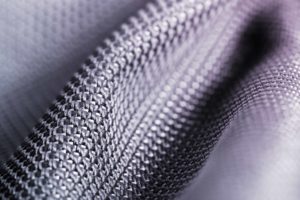APPLICATION OF TECHNOLOGY:
- Development of high-performance nylon
BENEFIT:
- Facilitates the introduction of desired properties in Nylon 66 (a fiber with high mechanical strength, rigidity, and good stability) through bio-advantaged replacements for adipic acid during the nylon polymerization process
- Utilizable for the isomerization of various muconic acid derivatives in addition to trans-3-hexenedioic acid (3HDA) and cyclo-2-hexene dicarboxylic acid (CH2DA) (i.e. the isomerization of CH2DA to cyclo-1-hexene dicarboxylic acid (CH1DA) can be advantageous because CH1DA can prevent ring opening)
BACKGROUND:
- Functionalization of the unsaturated derivatives of muconic acid leads to polyamides with performance advantages over conventional Nylon 66. However, the position of the unsaturation in the gamma position places constraints on the chemistries available to graft pendant groups and introduce desired properties in nylon.
TECHNOLOGY OVERVIEW:
To expand options for improved performance of Nylon 66, researchers at JBEI and Iowa State University have developed a simple and straightforward base-catalyzed isomerization of trans-3-hexenedioic (3HDA) acid to trans-2-hexenedioic (2HDA) acid, a suitable and desired alternative to 3HDA but which is commercially unavailable and inaccessible both thermochemically and electrochemically in good yields.
3HDA was first produced through the electrochemical hydrogenation of biologically-produced muconic acid, a bio-based platform chemical, and then subsequently reacted. 2HDA was obtained with 66% yield within 24 hours when reacting 3HDA in an aqueous solution of 5M KOH.
The developed technology works as well for the isomerization of other muconic acid derivatives, for example for the isomerization of cyclo-2-hexene dicarboxylic acid (CH2DA) to cyclo-1-hexene dicarboxylic acid (CH1I DA).
DEVELOPMENT STAGE: Proven principle
PRINCIPAL INVESTIGATORS:
- Joseph Eugene Hadel
- Marco Nazareno Dell’Anna
- Prerana Carter
- Jean-Philippe Tessonnier
- Brent Howard Shanks
- Eric William Cochran
STATUS: Patent pending.
OPPORTUNITIES: Available for licensing or collaborative research.
